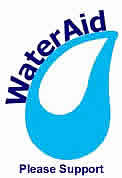Grease & Fat in Drainage Systems
 The accumulation of grease and fat within drainage and sewer systems is a major issue with in excess of £15 million spent yearly or reactive maintenance, a lot more cost will be incurred in the cleaning up operations after major blockages and floods and it is you the rate payer who contributes to both the problem and the final bill for the cleaning up. The accumulation of grease and fat within drainage and sewer systems is a major issue with in excess of £15 million spent yearly or reactive maintenance, a lot more cost will be incurred in the cleaning up operations after major blockages and floods and it is you the rate payer who contributes to both the problem and the final bill for the cleaning up.
So where does all this grease and fat come from then ?, the majority of the maintenance costs come from maintaining and cleaning of the large public sewers in our major cities where restaurants, public houses, fast food establishment and any other kind of catering operation you can think of pour tons of kitchen waste water into the sewer network daily.
The grease and fat solidifies when it cools and starts to coat the internal walls of pipes and chambers gradually reducing the internal bore of the system, this reduces flow rate which increases the build up of grease and fat until everything finally comes to head and the system blocks.
Grease & Fat in Domestic Drains
Every time you wash the pots or use the dishwasher a certain amount of grease and fat residue will pass into the drainage system to some degree, you can of course reduce this residue by scraping plates into a bin etc…. but a certain amount will always pass through.
When you pull the plug on the kitchen sink a good volume of warm soapy water leaves your home and enters the drainage system, firstly however the water would normally have to pass through two water traps, these being the trap beneath the sink and the trap on the outlet of your external kitchen gully.
It is these two traps that are prone to blocking as the warm liquid grease and fat hits the cold body of water in the trap it starts to solidify and collect, kitchen gullies also tend to have silt and debris in them which reduces the flow rate so the grease holds in the trap instead of passing into the main line drainage system.
Cleaning Grease and Fat in Domestic Drainage Systems
 When the grease solidifies is can literally set like a strong mortar mix particularly when it is combined with silt and fibers from washing machines, it also accumulates in hard to reach places such as the outlet of the neck on a gully pot or in the small bore pipe work that runs from your sink trap through to the external below ground drainage. When the grease solidifies is can literally set like a strong mortar mix particularly when it is combined with silt and fibers from washing machines, it also accumulates in hard to reach places such as the outlet of the neck on a gully pot or in the small bore pipe work that runs from your sink trap through to the external below ground drainage.
If you were able to reach the problem area with a set of drain rods they tend to punch a small hole through this kind of blockage which will work for a while but the build up will start again almost immediately, simply plunging the blocked gully pot may also shift the blockage but ideally you want to be removing as much of the build up as you can or you will find this becomes a regular occurrence.
Any decent drainage contractor will have the correct equipment for cleaning grease and fat from your system, flexible mechanical rods are used to clear small bore pipe work or to reach the blockage on the outlet of a gully with the rotating steel rods scouring the walls of the pipe work to remove the build up, high pressure water jetting units are used to thoroughly de-scale pipe work and return it to its original internal bore.
Chemical Unblocking of Sinks and Drains
 There are plenty of products on the market for clearing blocked sinks and traps some of which may actually work; when it comes to clearing blocked drains with chemicals I would be very wary of employing anybody who condones this kind of work. There are plenty of products on the market for clearing blocked sinks and traps some of which may actually work; when it comes to clearing blocked drains with chemicals I would be very wary of employing anybody who condones this kind of work.
If you have a blocked sink trap due to grease, fat and other gunk you will only have a relatively small volume of water between you and the blockage, there is therefore a fairly good chance that the degreasing chemicals you have purchased will reach the blockage and do their thing, if the blockage is only grease and fat and it is situated in the trap some 200mm below the sink.
When it comes to below ground drainage however the scenario changes a little, just because the gully that your kitchen sink discharges into is blocked it doesn't’t mean that the blockage is within the first 300mm of the outlet, or in other words the 1ltr of chemical cleaner you purchased may have to travel through 10mtrs of blocked 150mm pipe work before it reaches the blockage, in the unlikely event that it did reach the blockage it would be so diluted that it would be useless.
Commercial Drainage
Building Regulations Part H states `Drainage serving kitchens in commercial hot food premises should be fitted with a grease separator`, this is usually directed at new build premises or at buildings that are to have a change of use however there is talk of this being enforced on a wider scale.
Read more about Grease Traps and Commercial Kitchen Drainage here...........
|

 The accumulation of grease and fat within drainage and sewer systems is a major issue with in excess of £15 million spent yearly or reactive maintenance, a lot more cost will be incurred in the cleaning up operations after major blockages and floods and it is you the rate payer who contributes to both the problem and the final bill for the cleaning up.
The accumulation of grease and fat within drainage and sewer systems is a major issue with in excess of £15 million spent yearly or reactive maintenance, a lot more cost will be incurred in the cleaning up operations after major blockages and floods and it is you the rate payer who contributes to both the problem and the final bill for the cleaning up. When the grease solidifies is can literally set like a strong mortar mix particularly when it is combined with silt and fibers from washing machines, it also accumulates in hard to reach places such as the outlet of the neck on a gully pot or in the small bore pipe work that runs from your sink trap through to the external below ground drainage.
When the grease solidifies is can literally set like a strong mortar mix particularly when it is combined with silt and fibers from washing machines, it also accumulates in hard to reach places such as the outlet of the neck on a gully pot or in the small bore pipe work that runs from your sink trap through to the external below ground drainage. There are plenty of products on the market for clearing blocked sinks and traps some of which may actually work; when it comes to clearing blocked drains with chemicals I would be very wary of employing anybody who condones this kind of work.
There are plenty of products on the market for clearing blocked sinks and traps some of which may actually work; when it comes to clearing blocked drains with chemicals I would be very wary of employing anybody who condones this kind of work.
